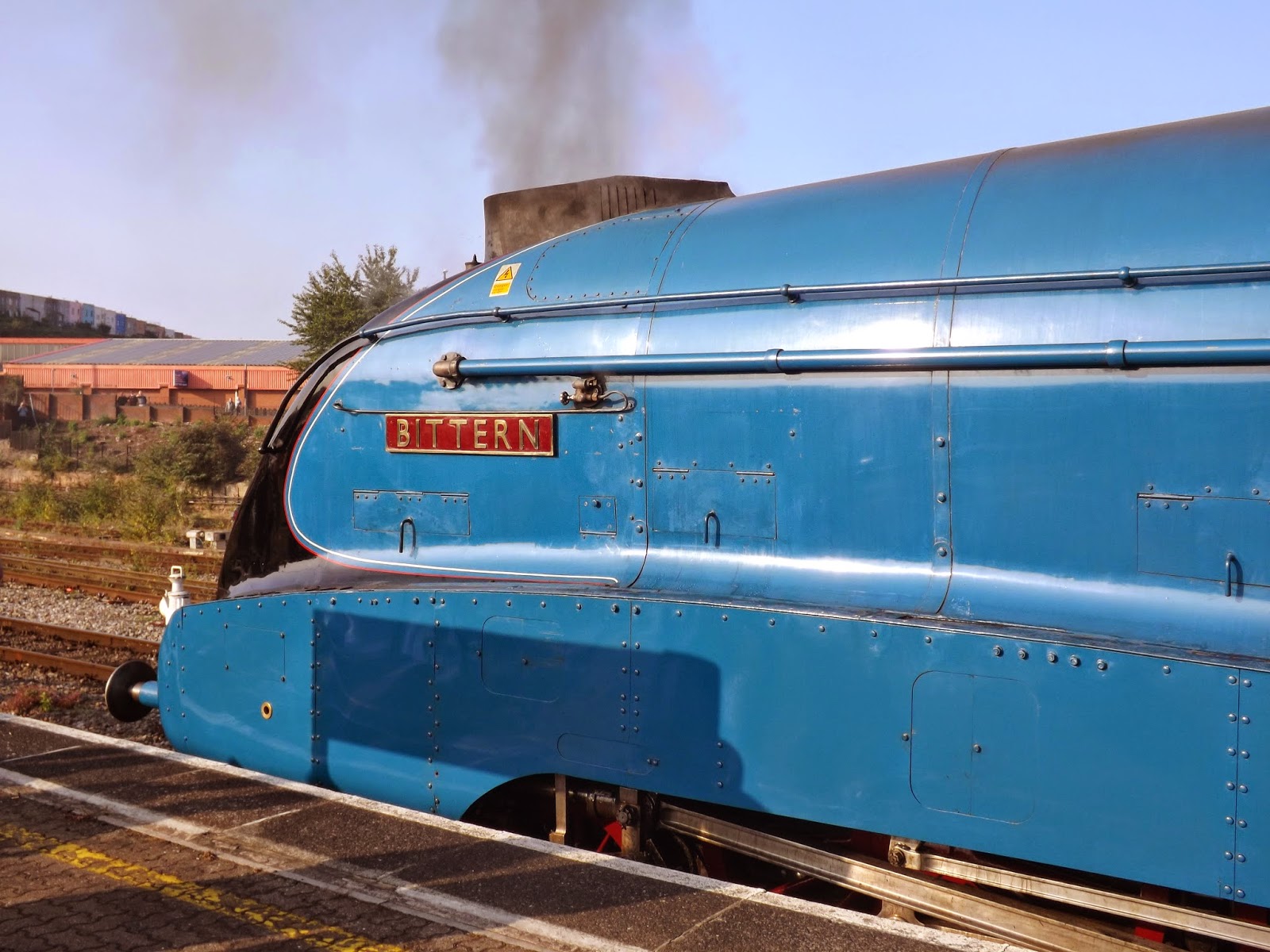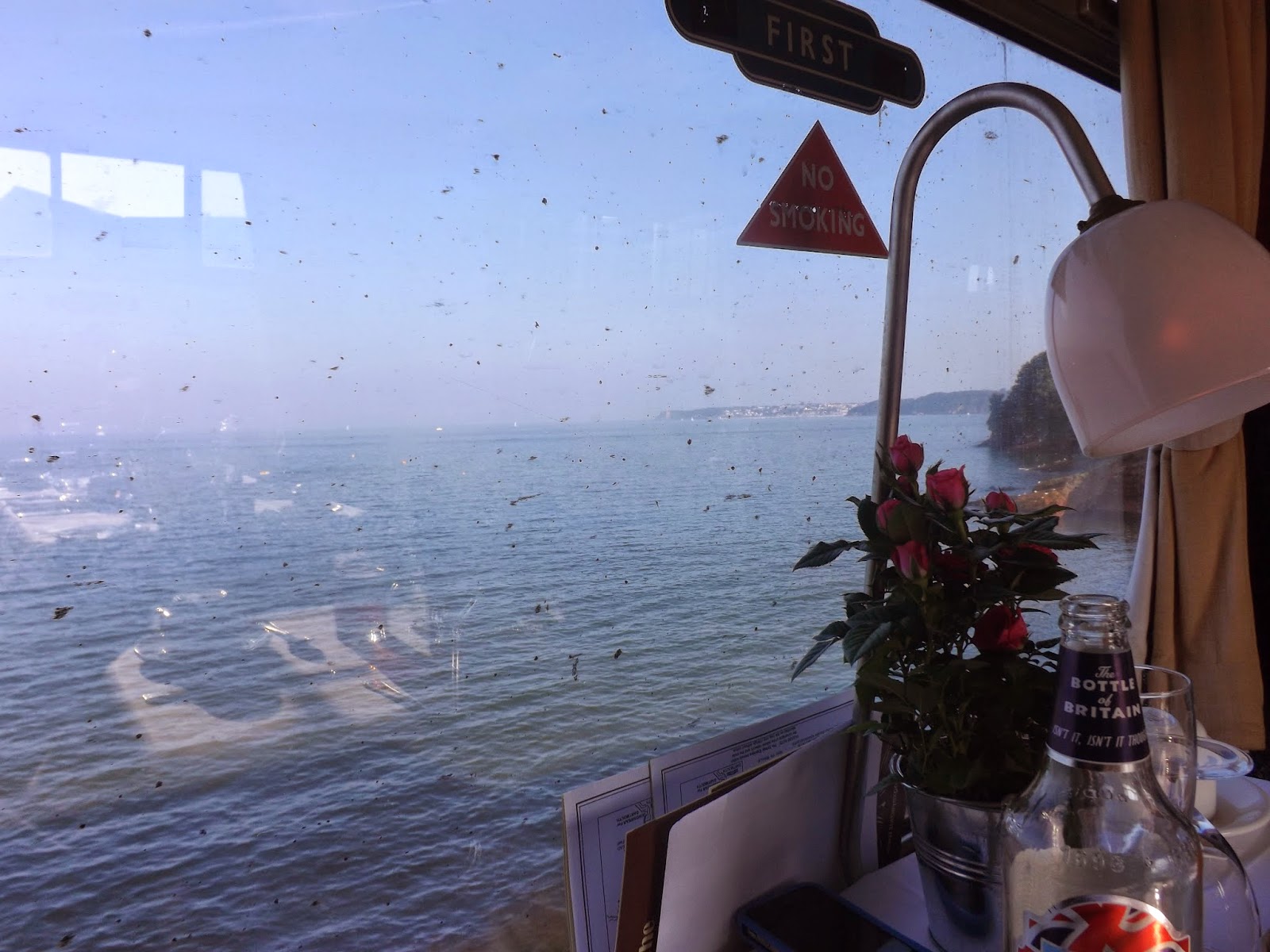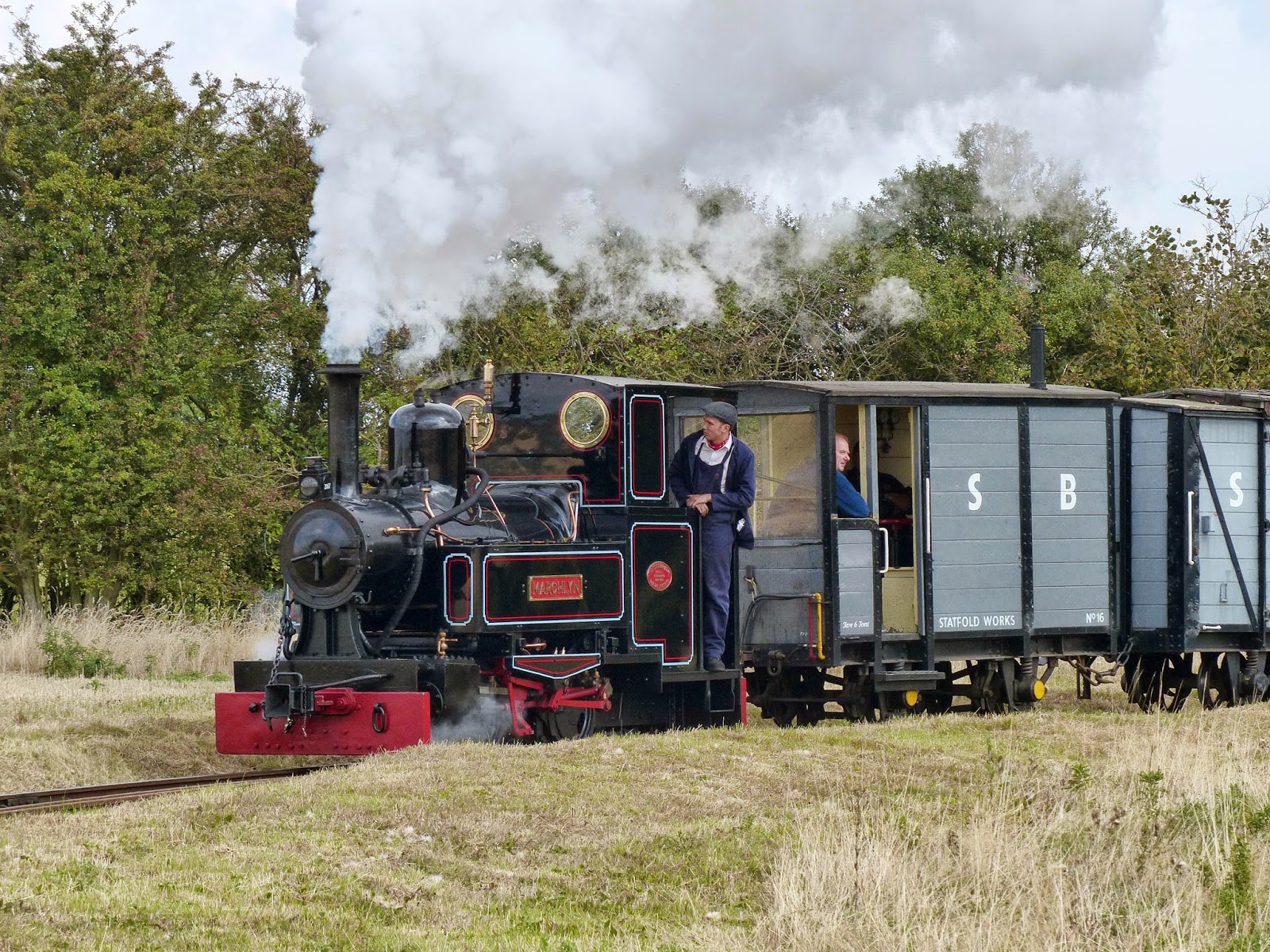
Hi everyone. Today, at last, we would be travelling aboard the much recommended "Torbay Express". Operated by Pathfinder Tours, the Torbay Express runs every Sunday during the summer season, from Bristol Temple Meads to Kingswear, for Dartmouth. Taking the main line from Bristol, the train makes passenger stops at Weston-Super-Mare and Taunton, as well as taking water at the latter. The train then continues towards Paignton where passengers may alight for a day at the seaside. Continuing on from Paignton, the train takes the PDSR route along preserved metals through Goodrington and then on to Kingswear, for Dartmouth. This route takes the train through some beautiful scenery: rolling fields, steep grades and the beautiful sea wall. We had opted for the Pullman Dining class; mainly because we like stuffing our faces! I'd booked this trip some time last year and, though it had came around quickly, it seemed ages away at the time. We stayed last night in the Holiday Inn Express at Bristol, which proved to be in fact, just over the road from Temple Meads which was ideal for our 9:15am departure this morning. We arrived on our advertised platform at around 8:50am with the locomotive for the day at the head of the 10-coach train. Unusually, today's train was hauled by LNER A4 Pacific No4464 "Bittern", one of Sir Nigel Gresley's famous East Coast Racehorses. Built at Doncaster in 1937, the 4-6-2 now looks resplendent in LNER Garter Blue livery. Sister engine to world steam record holder "Mallard", "Bittern" gained fame last year when she hauled three special 90mph trains on the network as part of the 'Mallard 75th Anniversary' celebrations. Special dispensation was given to the immaculate pacific to do these commemorative runs, which she did so with ease, achieving 93mph at one point. The loco certainly looked good today...

I've never been much of a fan of Eastern stuff. Don't get me wrong, I can appreciate the engineering and the achievements that they had, but apart from the GNR types such as the C1 and the Stirling, I can't say LNER stuff really floats my boat. However, "Bittern" would certainly prove herself today!...
Having admired the sleek lines of the streamlined A4, we boarded Coach A at our already set table-for-two. Immediately came the Bucks Fizz reception: a lovely touch...
With the bucks fizz slipping down the little red lane quite nicely, the train got underway. To my surprise, the A4 walked away without fuss. The traditional 3-cylinder Gresley beat was very much in evidence as the blue pacific got the load up to speed. Whilst enjoying our porridge, the sunlit countryside was just flying by...
Following the porridge there was a short break before a round of toast appeared. The good lady was enjoying the bucks fizz as the A4 pounded along. My talks about A4's and their 3-cylinder design compared to traditional 2-cylinder locomotives seemed of little interest however...
Following the toast and a stop at Weston-Super-Mare to collect more passengers, the full breakfast appeared, much to our delight. We were more than ready for this!...
Following the full breakfast, even more toast and some tea, it was time to apply the brakes for Taunton. 4464 had been in great form so far, and the busy hi-viz clad crew soon set to work filling the tender and trimming the coal. She was just shining, a real tribute to the guys who look after her...
As well as her nameplate, the A4 now carries two 'Mallard-style' commemorative plaques which talk of her 90mph runs for the 'Mallard 75th'. Sister engine "Mallard"s plaques talk of her 126mph World Record achievement. Note the side valances on the A4, which were later removed in BR days to aid maintenance...
A quick view of the menu aboard the luxury Pullman Class coaches...
Having left Taunton behind, the A4 was soon back into her stride and was putting on some marvellous performances as we raced through Somerset and into Devon. She pretty much flattened the climb of Whiteball bank and shut-off quickly as we entered the tunnel, blowing off loudly as she did so. The engine was making good time, with each passing stop on the running notes seeming to pass by 1-minute early. The part of the run I think everyone had been waiting for was the run along the sea wall through Dawlish. This section, newly repaired after the winter damage, is one of the most beautiful pieces of railway engineering in the country. As we passed along, it looked fairly murky but the view was just brilliant. The A4 was flying at this point, whistling loudly as we passed through Dawlish at probably 70mph...
The A4 was soon easing off, slowing for Newton Abbott and Torquay. The train was soon descending into the first drop off point of Paignton...
At Paignton the network rail crew changed for the PDSR crew and the engine and 10-coach train were soon slowly heading over the cross-over, whilst 2-8-0 Tank "Goliath" watched from her waiting departure. Once on PDSR metals, the A4 was working hard to accelerate the train up to as near to 25mph as was possible, ready to attack the steep grade of Goodrington Bank. The engine did really well in fairness, as in the past even the best of engines have come into bother here. A4's were not climbers, they were racers, and so I was surprised when the A4 easily climbed up into the summit station of Churston at around 15mph: not bad at all. The loco could then take a breather as we dropped down into Kingswear on falling gradients. Then, bang on time, came our arrival at Kingswear. Well done "Bittern"...

From the A4's train we walked through the station and down onto the waiting Ferry. The weather was still a little bleak but it would soon brighten up for warm sunshine. The Ferry then took us across to the picturesque town of Dartmouth...

We walked around Dartmouth for an hour or so, taking in some of the quirky gift shops and sweet shops dotted about the place. We had around 4 hours in total so we decided that we would take a boat trip. Most of the boat cruises are again operated by the railway itself and therefore we opted for the best on their books: "Kingswear Castle". Billed as the last coal fired paddle steamer, the 1924-built vessel has been operating cruises in Dartmouth for the last 18 months and, though I did spot her last year, we decided that this would kill two birds with one stone. So, aboard we were, and away we went (see post). Later on in the day, around 4pm, we returned to the station at Kingswear via the Ferry. Having walked to the head of the 10-coach express, 4464 soon returned from Churston after turning and servicing...

Having admired the A4 for a while longer, with the good lady commenting that "it didn't look like a proper steam engine", to which I half-heartedly agreed, we re-boarded our coach and champagne was served...
Champagne it may have been but the trusty beer was still in the background...
The return run left on time at 4:50pm. Eddie has always been a big fan of the A4 Pacific's and boasted that I would be blown away by the performance of them. Me, I'm more of a Midland fan and hold the Duchess pacific in the very highest regard. Eddie has often been annoyed by my thoughts of "an A4 will do when a Duchess is unavailable" or that "an A4 will pull a support coach with a following wind". Obviously I joked and thought of eating my words as the A4 gave the climb out of Kingswear some real stick. However she did have to stop at Churston as the boiler water level had fallen to less than was necessary to descend Goodrington bank. Though the delay was a mere few minutes, I could not resist telling Eddie! Anyway, hilarity over, the train descended to Goodrington and then along to Paignton where the final passengers rejoined. This was the view whilst descending Goodrington, eating our soup...

Leaving Paignton with the network rail crew back in control, the A4 flew. Torquay was a blur as she roared past, taking the climb through Torre in her stride. From there, she was running and running. We ate our main course of roast beef with all the trimmings as the A4 tore along the sea wall...
Any better views?...
Following our 4-course meal which stuffed us to within an inch of our lives, we were back at Taunton where the A4 watered again. Once again I opted to run down through the subway and up onto the opposite platform to take pictures. You had absolutely no chance with the "take a picture of me by the steam train" mob on the other side! The A4 was basking in the sun...
A final view of the impressive No4464 "Bittern"...
Following the Taunton water stop there was no stopping the A4: she flew. I cannot lie, I would have relished the chance to take a King to Kingswear but the A4 did sterling work. She flew, she absolutely flew, mile after mile with ease. They are beasts, they really are. Used originally for none stop work with their corridor tenders between Kings Cross and Edinburgh, the A4's were really just runners. I mean sure, they haven't got the looks of the 'traditional steam engine', that honour goes to Castle's and King's, but they are sleek and they do go. Very impressed indeed. The "Torbay Express" was a fantastic run and we had such a great time. The food was great, the staff were great and the scenery was wonderful: I cannot fault it. Bitten by the main line bug, I've now booked some dining on the 'Lincoln Christmas Fair' trip with Tyseley...why not?! All the best, Sam...





